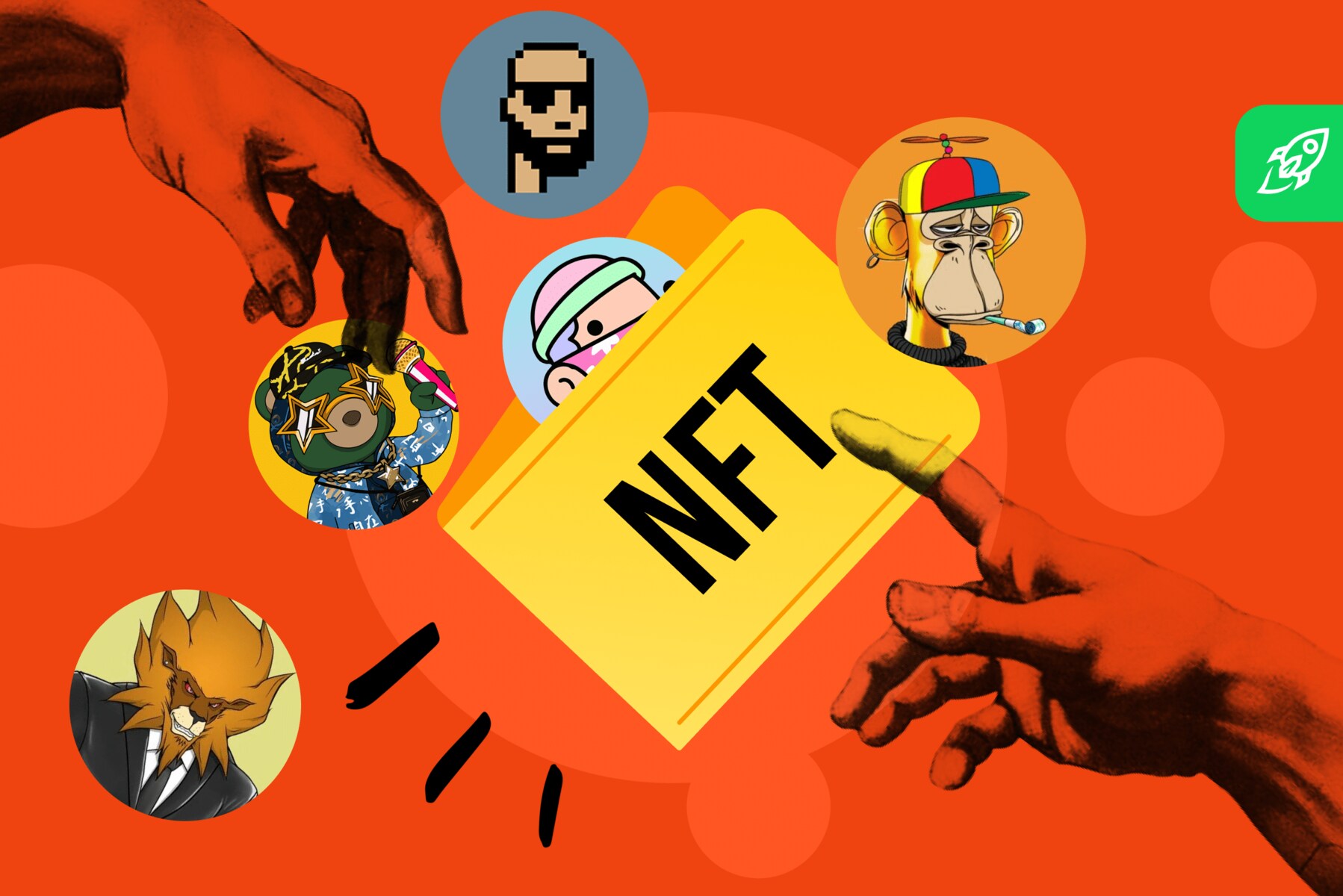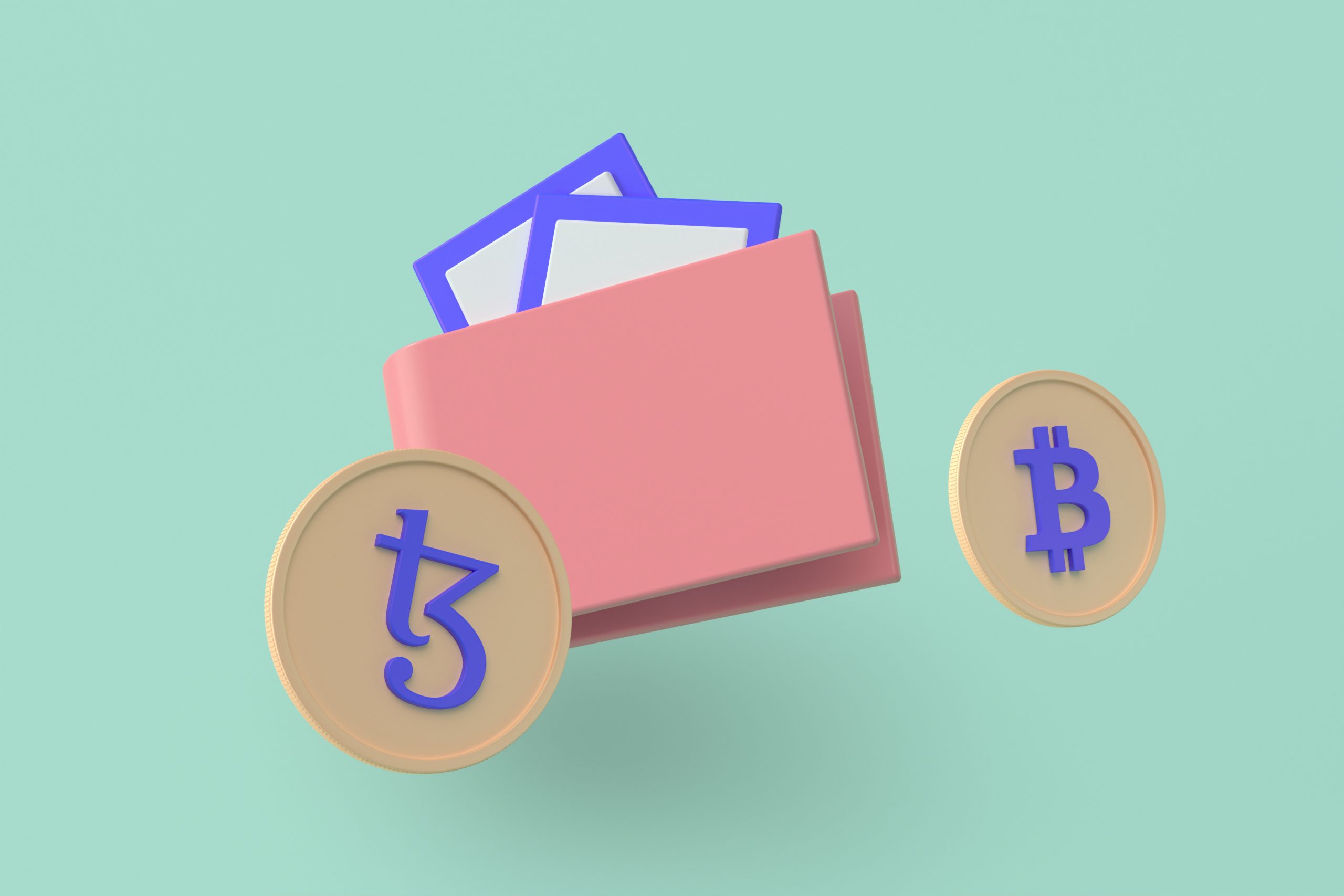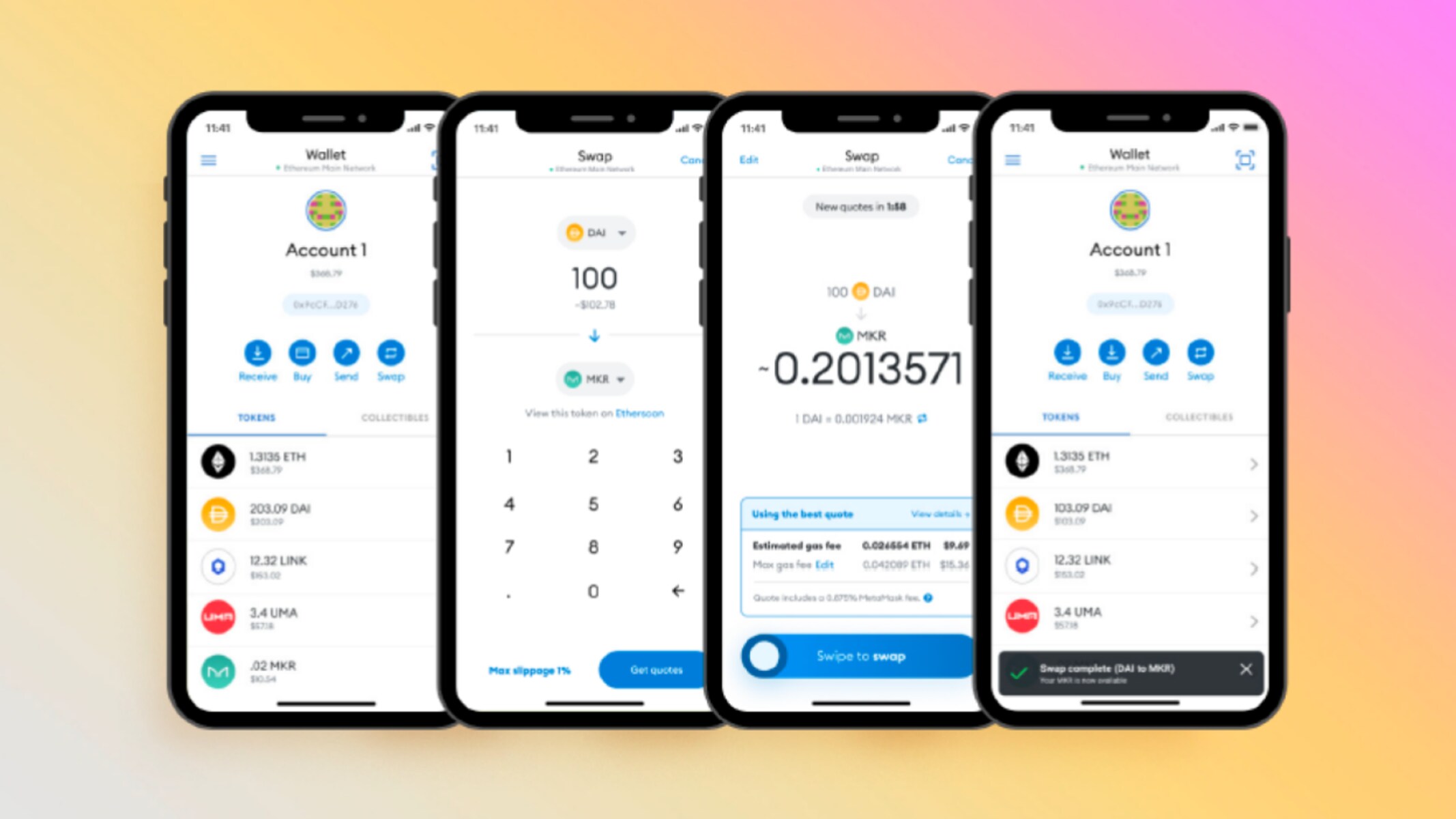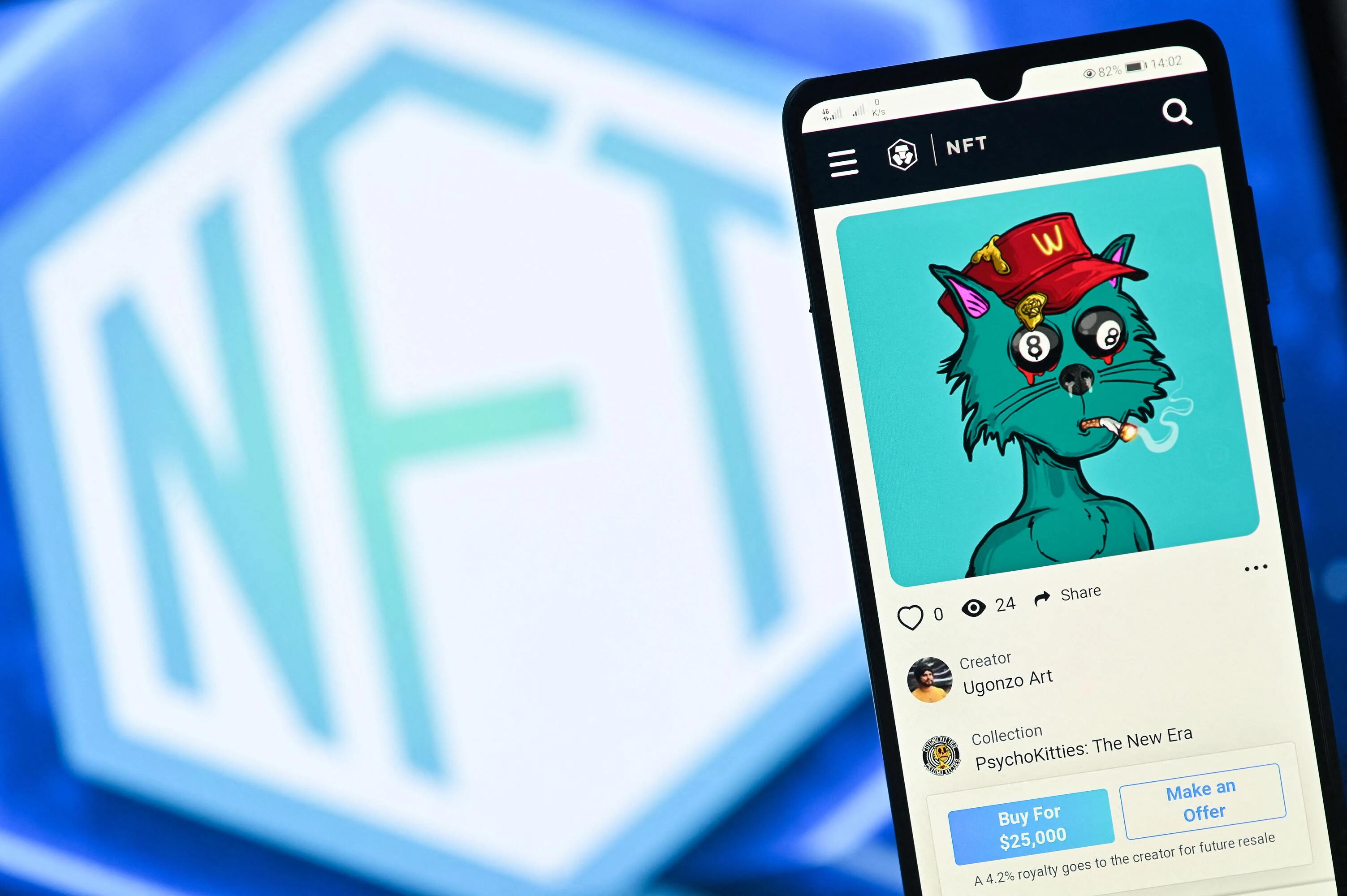What Is an NFT Wallet
An NFT wallet, also known as a non-fungible token wallet, is a digital wallet that allows users to securely store, manage, and interact with their non-fungible tokens. But before we delve into what an NFT wallet is, let’s first understand the concept of a wallet itself.
A wallet, in the digital realm, is a software application or tool that enables users to securely store and manage their cryptocurrencies, such as Bitcoin and Ethereum. It acts as a virtual pocket where users can store their digital assets, make transactions, and track their balances.
Now, let’s talk about non-fungible tokens (NFTs). Unlike cryptocurrencies, which are fungible and can be exchanged for one another, NFTs are unique and indivisible digital assets that represent ownership of a specific item, piece of artwork, or collectible. They are built using blockchain technology, which ensures their authenticity, traceability, and scarcity.
So, an NFT wallet is specifically designed to cater to the needs of NFT holders. It provides a secure and convenient way to store and manage their NFTs, keeping them safe from loss or theft.
But an NFT wallet is more than just a storage facility. It also serves as a gateway to the vibrant world of NFT marketplaces and platforms. Through an NFT wallet, users can browse, buy, sell, and trade NFTs, as well as participate in auctions and engage with the NFT community.
Moreover, NFT wallets often come with additional features and functionalities. These can include the ability to display and showcase NFT collections, provide detailed transaction histories, enable social interactions, and even facilitate the creation and customization of NFTs.
In summary, an NFT wallet is a digital tool that allows users to safely store, manage, and interact with their non-fungible tokens. It serves as a bridge between the user and the world of NFTs, providing access to marketplaces, facilitating transactions, and offering additional functionalities for a seamless NFT experience.
What Is a Wallet
A wallet, in the digital realm, is a software application or tool that enables users to securely store and manage their cryptocurrencies and other digital assets. It acts as a virtual pocket where users can store their digital currencies, make transactions, and track their balances.
When it comes to cryptocurrency wallets, there are two main types: hot wallets and cold wallets. Hot wallets are connected to the internet and are typically used for everyday transactions. They are easy to set up, convenient to access, and allow for quick transfers. Examples of hot wallets include mobile wallets, desktop wallets, and web-based wallets.
On the other hand, cold wallets, also known as hardware wallets, are offline devices specifically designed to store digital assets securely. These wallets generate and store private keys offline, ensuring that they are not exposed to the internet, making them less vulnerable to hacking attempts. Cold wallets provide an extra layer of security, but they may be less convenient for frequent transactions.
Wallets use cryptographic techniques to secure and authenticate transactions. They generate pairs of cryptographic keys – a public key and a private key. The public key is used to receive funds, while the private key is kept secret and is used to sign transactions to spend or transfer funds. It is crucial to keep the private key secure and confidential, as anyone with access to it can control the funds associated with the wallet.
In addition to storing cryptocurrencies, wallets often provide features such as transaction history, address book management, and integration with various blockchain networks. Some wallets even offer the ability to stake cryptocurrencies for earning passive income or participate in decentralized finance (DeFi) protocols.
It is important to note that while wallets provide a secure way to store and manage cryptocurrencies, they do not actually contain the digital assets themselves. Instead, they store the cryptographic keys that allow access to the assets on the blockchain. This means that even if a wallet is lost or damaged, the funds can still be recovered using the backup or recovery options provided by the wallet.
In summary, a wallet is a digital tool that enables users to securely store and manage their cryptocurrencies and digital assets. It comes in different forms, such as hot wallets and cold wallets, and provides features beyond storage, such as transaction history and integration with blockchain networks. It plays a crucial role in facilitating secure and convenient transactions in the digital asset ecosystem.
What Is an NFT
NFT, short for non-fungible token, has gained significant attention in recent years as a revolutionary concept in the digital world. In simple terms, an NFT is a unique and indivisible digital asset that represents ownership of a specific item, piece of artwork, or collectible.
Unlike cryptocurrencies such as Bitcoin or Ethereum, which are fungible and can be exchanged with one another on a one-to-one basis, NFTs are unique and cannot be exchanged on a like-for-like basis. Each NFT has its own distinct value and characteristics, making it one of a kind.
NFTs are built on blockchain technology, which provides a decentralized and transparent ledger system. This ensures that each NFT is verifiable, traceable, and cannot be tampered with. The ownership and transaction history of an NFT can be easily tracked, creating a sense of authenticity and provenance.
NFTs have opened up a world of possibilities for artists, musicians, creators, and collectors. Artists can tokenize their digital artwork, music, or other creations as NFTs, allowing them to sell and monetize their work directly to fans and collectors. This unlocks new revenue streams and eliminates the need for intermediaries.
Collectors, on the other hand, can purchase NFTs and establish ownership of rare and unique digital assets. They can immerse themselves in a growing ecosystem of digital art, virtual real estate, virtual goods, and even virtual identities.
One of the key features of NFTs is their ability to incorporate smart contracts. Smart contracts are self-executing agreements that automatically facilitate the terms of a transaction when certain conditions are met. These contracts can include royalty mechanisms that allow creators to receive a percentage of future sales, ensuring ongoing compensation for their work.
It is important to note that the value of NFTs is highly subjective and driven by individual perception. What one person values may not be the same for another. The uniqueness, scarcity, and desirability of an NFT often play a role in determining its market value.
NFTs have brought about a new era of digital ownership and creativity, disrupting traditional models and enabling new opportunities for artists and collectors. While they have faced criticism for environmental concerns and fluctuating market trends, NFTs continue to captivate individuals and reshape the way we perceive digital assets.
The Need for NFT Wallets
With the growing popularity of non-fungible tokens (NFTs), the need for NFT wallets has become increasingly apparent. NFT wallets play a crucial role in providing a secure and convenient platform for users to manage and interact with their NFTs. Here are some reasons why NFT wallets are essential:
1. Storage and Security: NFT wallets offer a safe and reliable way to store and protect your valuable digital assets. Unlike traditional storage methods, such as saving files on a computer or cloud storage, NFT wallets are specifically designed to securely hold NFTs using advanced cryptographic techniques. This ensures that your NFTs are protected from theft or unauthorized access.
2. Accessibility and Convenience: NFT wallets provide users with the ability to access their NFTs from anywhere, anytime. Whether you’re using a desktop, mobile, or web-based NFT wallet, you can easily log in and manage your NFT collection. This accessibility allows for seamless interaction with NFT marketplaces, enabling users to buy, sell, and trade NFTs with ease.
3. Interoperability: NFT wallets ensure interoperability across different platforms and blockchains. They allow users to connect and interact with various NFT marketplaces and platforms, providing a unified experience for managing their NFTs. This interoperability eliminates the need for multiple accounts and simplifies the process of buying, selling, and trading NFTs across different platforms.
4. Customization and Display: Many NFT wallets offer features that allow users to customize and display their NFT collections. These features include the ability to create personalized galleries or galleries, where users can showcase their NFTs to the world. This adds a social and visual element to the NFT experience, allowing users to share and interact with their collections in a unique way.
5. Transaction Transparency: NFT wallets provide users with transparent and traceable transaction history. Every purchase, sale, or transfer of an NFT is recorded on the blockchain, allowing users to easily track and verify their transactions. This transparency adds an extra layer of trust and authenticity to the NFT ecosystem, ensuring that the ownership and provenance of NFTs can be easily verified.
6. Future Potential: As the NFT market continues to evolve and expand, NFT wallets are poised to offer new and exciting features. With advancements in technology and the integration of NFTs into various industries, NFT wallets are likely to play a crucial role in enabling users to leverage the full potential of their digital assets.
In summary, NFT wallets are essential tools that provide storage, security, accessibility, and customization for managing NFTs. They enable users to securely store and interact with their NFTs, simplify transactions, and offer features that enhance the overall NFT experience. As the NFT market continues to grow, NFT wallets will become even more critical for users to fully participate in this vibrant digital ecosystem.
How NFT Wallets Work
NFT wallets function as digital vaults that allow users to store and manage their non-fungible tokens (NFTs) securely. Understanding how NFT wallets work is essential to fully utilize and navigate the world of NFTs. Here’s a breakdown of the key components and processes involved in NFT wallets:
1. Key Generation: When setting up an NFT wallet, a unique cryptographic key pair is generated. The key pair consists of a public key, used to receive NFTs, and a private key, used to access and manage the NFTs. The private key is the most critical component and must be kept securely as it provides ownership and control over the NFTs.
2. Wallet Address: The wallet address is derived from the public key and serves as a unique identifier for the wallet. Similar to a bank account number, the wallet address allows others to send NFTs to the wallet. It is essential to share the wallet address for receiving NFTs.
3. NFT Storage: NFT wallets store the NFTs by holding the associated ownership records on the blockchain. The actual NFTs are not stored directly in the wallet; rather, the wallet holds the digital credentials that prove ownership of the NFTs. These credentials include the NFT contract address, token ID, and transaction history.
4. Wallet Interface: NFT wallets provide a user-friendly interface that allows users to manage their NFTs effectively. The interface typically includes features like a dashboard displaying the NFT collection, transaction history, and options to buy, sell, or trade NFTs. Wallet interfaces can be in the form of mobile apps, web applications, or software programs.
5. Blockchain Integration: NFT wallets connect and interact with specific blockchain networks where the NFTs are created and traded. Most NFTs are built on Ethereum, but wallets may also support other blockchains like Binance Smart Chain or Flow. The wallet integrates with the blockchain to communicate ownership and initiate transactions, such as buying, selling, or transferring NFTs.
6. Transaction Signing: To authorize transactions, such as transferring or selling NFTs, the wallet uses the private key to generate a digital signature. The digital signature proves ownership and verifies that the transaction is legitimate. The signed transaction is then broadcasted to the blockchain network, where it is validated and included in the blockchain records.
7. Security Measures: NFT wallets implement various security measures to safeguard the private keys and protect against unauthorized access. These measures may include encryption, password protection, multi-factor authentication, and hardware wallet integration. It is imperative to follow best practices for wallet security, such as using strong passwords, enabling two-factor authentication, and regularly backing up the private keys.
In summary, NFT wallets generate and store cryptographic key pairs, securely hold the ownership records of NFTs on the blockchain, provide user-friendly interfaces for managing NFTs, integrate with specific blockchain networks, sign transactions using private keys, and implement security measures to protect the private keys. Understanding how NFT wallets work empowers users to safely store and interact with their NFTs and participate in the exciting world of digital art, collectibles, and virtual assets.
Types of NFT Wallets
As the popularity of non-fungible tokens (NFTs) continues to rise, various types of NFT wallets have emerged to cater to the diverse needs of users. These wallets offer different features, levels of security, and accessibility. Here are some common types of NFT wallets:
1. Software Wallets: Also known as hot wallets, software wallets are digital wallets that run on software applications, including desktop, mobile, and web-based wallets. These wallets are convenient and accessible, allowing users to manage their NFTs through user-friendly interfaces. However, since they are connected to the internet, they may have higher security risks compared to other types.
2. Hardware Wallets: Hardware wallets are physical devices specifically designed to store and secure cryptocurrencies and NFTs. They provide an offline storage solution, keeping private keys and sensitive information isolated from internet-connected devices. Hardware wallets offer enhanced security, protecting NFTs even if the computer or device used to access them is compromised. Examples of hardware wallets include Ledger and Trezor.
3. Web Wallets: Web wallets, also known as browser-based wallets, operate within web browsers. They are considered software wallets but provide the convenience of accessing NFTs through a browser interface. Web wallets can be accessed from any device with an internet connection, providing flexibility and mobility. However, users must ensure they trust the web wallet provider and take necessary precautions to protect their private keys.
4. Mobile Wallets: Mobile wallets are designed for smartphones and tablets, offering a convenient way to manage NFTs on the go. These wallets can be downloaded as applications from app stores and typically provide a user-friendly interface optimized for mobile devices. Mobile wallets combine the accessibility of software wallets with the portability of mobile devices, allowing users to easily manage and interact with their NFTs anytime, anywhere.
5. Paper Wallets: Paper wallets involve printing the private and public keys of an NFT wallet on a physical piece of paper. This creates an offline form of storage, enhancing security by keeping the keys away from devices connected to the internet. Paper wallets can be created using online services or dedicated software. While paper wallets offer excellent security against online threats, they can be vulnerable to physical damage or loss and require careful handling and protection.
6. Multi-chain Wallets: Multi-chain wallets support multiple blockchain networks, allowing users to manage NFTs across different networks from a single wallet. This type of wallet provides convenience for users who hold NFTs on various blockchains, eliminating the need for multiple wallets and simplifying the management process. Multi-chain wallets enable users to seamlessly interact with NFTs on different blockchain networks, such as Ethereum, Binance Smart Chain, or Flow.
7. Custodial Wallets: Custodial wallets are provided by third-party services or exchanges, where the NFTs are held on behalf of the user. In custodial wallets, the private keys are controlled by the service provider. While custodial wallets offer convenience and user-friendly interfaces, users are essentially trusting the service provider with the security and ownership of their NFTs. It is essential to choose reputable and trustworthy custodial wallet providers.
Each type of NFT wallet has its own advantages and considerations. Users should evaluate their needs, preferences, and security requirements when selecting the most suitable wallet type. It is important to prioritize security measures and take steps to protect private keys, regardless of the wallet type chosen.
Choosing the Right NFT Wallet
Choosing the right non-fungible token (NFT) wallet is crucial for a smooth and secure experience in managing and interacting with your NFTs. With various wallet options available, it’s important to consider several factors before making a decision. Here are key considerations when choosing an NFT wallet:
1. Security: Security should be a top priority when selecting an NFT wallet. Look for wallets that employ robust security measures such as encryption, two-factor authentication, and hardware wallet integration. Consider whether you prefer a hardware wallet for offline storage or a software wallet with enhanced security features.
2. Compatibility: Ensure that the NFT wallet you choose is compatible with the blockchain network on which your NFTs are built. The majority of NFTs are based on the Ethereum blockchain, so compatibility with Ethereum is a crucial consideration. However, if your NFTs are on other blockchain networks like Binance Smart Chain or Flow, look for wallets that support those networks.
3. User Experience: User experience is important in facilitating easy navigation and management of your NFTs. Consider the design and user interface of the wallet to ensure it is intuitive and user-friendly. A well-designed interface can enhance your overall experience in buying, selling, and interacting with NFTs.
4. Wallet Features: Different NFT wallets offer varying features beyond basic storage. Consider the additional functionalities you may need, such as the ability to display or showcase your NFT collection, social interaction features, integration with NFT marketplaces, and customization options. Evaluate whether these features align with your preferences and goals.
5. Reputation and Trustworthiness: When selecting an NFT wallet, consider the reputation and trustworthiness of the wallet provider. Research online reviews, community feedback, and the track record of the wallet provider. Choosing a reputable and trusted wallet provider reduces the risk of potential security breaches or fraudulent activities.
6. Support and Development: Ensure that the NFT wallet you choose has a dedicated support system in place. Consider the responsiveness and availability of customer support and the frequency of wallet updates and developments. Regular updates indicate active development and ongoing improvements to address security vulnerabilities and add new features.
7. Community Engagement: Consider the level of community engagement surrounding the NFT wallet. Active communities provide opportunities for support, knowledge-sharing, and staying up-to-date with the latest trends and developments in the NFT space. Joining communities can enhance your overall experience and open doors to new opportunities.
Ultimately, the right NFT wallet choice depends on your individual needs, preferences, and the level of security you require for your NFT holdings. It’s essential to weigh the pros and cons, consider the trade-offs, and evaluate the features and characteristics of each wallet option before making a selection. Taking the time to choose the right NFT wallet can enhance your NFT journey and ensure the safety and accessibility of your digital assets.
Security of NFT Wallets
When it comes to non-fungible token (NFT) wallets, ensuring the security of your digital assets is of paramount importance. NFTs can represent significant value, both financially and sentimentally, so it is crucial to prioritize security measures when selecting and using an NFT wallet. Here are key considerations to protect the security of your NFTs:
1. Choose a Trustworthy Wallet: Select an NFT wallet from reputable providers with a strong track record of security. Research and read reviews to ensure the wallet has not been associated with security breaches or fraudulent activities. Trustworthy wallet providers prioritize the protection of users’ assets and employ robust security measures.
2. Offline Storage: Consider using a hardware wallet, also known as a cold wallet, for securing your NFTs. Hardware wallets store private keys offline, reducing the risk of online hacking activities. By keeping your private keys offline, you minimize exposure to potential malware and phishing attacks targeting your digital assets.
3. Backup Your Private Keys: Always create backups of your private keys or recovery phrases in a secure location. Private keys are the gateway to your NFTs, so make sure to have copies secured in multiple physical locations. Store these backups in a place away from potential theft or damage, such as a safe deposit box or a dedicated hardware wallet backup device.
4. Two-Factor Authentication: Enable two-factor authentication (2FA) as an additional layer of security for accessing your NFT wallet. 2FA requires a second form of verification, such as a unique code sent to your mobile device, before allowing access to your wallet. This helps protect against unauthorized access even if your private keys are compromised.
5. Regularly Update Wallet Software: Keep your NFT wallet software up to date with the latest versions and security patches. Wallet updates often address known vulnerabilities and implement improved security measures. Regularly check for updates provided by the wallet provider and ensure that you install them promptly.
6. Be Cautious of Phishing Attempts: Be vigilant against phishing attempts, where malicious actors try to trick you into revealing your private keys or sensitive information. Be cautious of unsolicited emails, messages, or links requesting your wallet information. Always double-check the URL of the wallet site or the sender’s email address to ensure it is legitimate.
7. Keep Personal Devices Secure: Ensure the security of the devices you use to access your NFT wallet. Install reputable antivirus software, keep your operating system up to date, and avoid connecting to unsecured public Wi-Fi networks. Additionally, use strong, unique, and regularly updated passwords for your devices and your wallet.
8. Be Mindful of Public Address Exposure: Exercise caution when sharing your NFT wallet’s public address. While it is needed for receiving NFTs, sharing it publicly may compromise your privacy and make you a target for phishing attempts or scams. Be mindful of where you share your public address and consider using different addresses for different purposes.
NFT wallets play a vital role in securing your precious digital assets. By following these security practices and being vigilant, you can greatly minimize the risk of unauthorized access, theft, or loss of your NFTs. Stay informed about the latest security trends, adapt to new security measures, and prioritize the protection of your NFTs to ensure a secure and worry-free experience.
Best Practices for NFT Wallet Usage
To ensure the optimal security and management of your non-fungible tokens (NFTs), it is essential to follow best practices for NFT wallet usage. By implementing these guidelines, you can enhance the protection of your digital assets and have a smooth experience in the world of NFTs. Here are some key best practices to consider:
1. Secure Your Private Keys: Safeguard your private keys and recovery phrases, which grant access to your NFTs. Keep them offline, preferably on a hardware wallet, or store them securely in multiple physical locations. Avoid sharing your private keys with anyone and beware of phishing attempts requesting your private key information.
2. Regularly Backup Your Wallet: Create regular backups of your NFT wallet and store them in secure locations. Consider multiple backup options, such as physical media, encrypted cloud storage, or backup devices. Regularly test your backups to ensure they are accurate and recoverable.
3. Keep Your Wallet Software Updated: Stay updated with the latest versions of your NFT wallet software. Wallet updates often include security enhancements and bug fixes. By keeping your wallet software up to date, you minimize the risk of vulnerabilities and take advantage of the latest security measures.
4. Use Strong Passwords: Create strong, unique passwords for your NFT wallet accounts. Use a combination of uppercase and lowercase letters, numbers, and special characters. Avoid reusing passwords across multiple platforms and consider using a password manager to securely store and manage your passwords.
5. Enable Two-Factor Authentication (2FA): Enable 2FA whenever possible for your NFT wallet. 2FA adds an extra layer of security by requiring a second verification step, typically through a mobile app or SMS code, when logging into your wallet. This helps protect your wallet from unauthorized access even if the password is compromised.
6. Be Wary of Third-Party Apps and Services: Exercise caution when using third-party apps or services to interact with your NFT wallet. Ensure their legitimacy and trustworthiness before integrating them with your wallet. Be mindful of potential security risks and only use trusted and reputable apps or services.
7. Verify Website URLs: Always double-check the URL of your NFT wallet website to ensure you are accessing the legitimate platform. Phishing attempts can mimic official websites, so it’s crucial to verify the URL before entering any sensitive information or interacting with your wallet.
8. Educate Yourself: Stay informed about the latest security practices and trends in the NFT community. Familiarize yourself with common threats, such as phishing attacks, scams, and malware. Regularly update your knowledge about secure NFT practices and seek guidance from reputable sources.
9. Manage Public Address Exposure: Be cautious about sharing your NFT wallet’s public address publicly. Although a public address is necessary for receiving NFTs, sharing it widely may compromise your privacy and make you more susceptible to targeted attacks. Consider using different addresses for different purposes and limit sharing to trusted individuals or platforms.
10. Keep Your Devices Secure: Protect the devices you use to access your NFT wallet. Install reputable antivirus software, keep your operating system and applications up to date, and avoid connecting to unsecured public Wi-Fi networks. Regularly scan for malware and ensure your devices are protected against potential threats.
By adhering to these best practices, you can significantly enhance the security and overall experience of managing your NFTs in your chosen wallet. Stay vigilant, remain proactive about security measures, and continuously educate yourself to make the most of your NFT journey.
Conclusion
Non-fungible tokens (NFTs) have revolutionized the digital landscape by providing unique and indivisible digital assets. NFT wallets play an essential role in securely storing, managing, and interacting with these valuable assets. Whether you are an artist showcasing your creative work, a collector acquiring rare digital items, or a participant in the NFT marketplace, choosing the right NFT wallet and implementing best security practices is crucial.
When selecting an NFT wallet, consider factors such as security, compatibility with blockchains, user experience, wallet features, reputation of the provider, and community engagement. Assess the trade-offs and choose a wallet that aligns with your specific requirements and preferences. Remember to prioritize the security of your private keys, regularly back up your wallet, keep your wallet software updated, and employ strong passwords and two-factor authentication.
Protecting your NFT wallet from phishing attempts, verifying website URLs, and limiting the exposure of your public address are also important considerations. Additionally, staying informed about the latest security practices and remaining cautious about third-party apps or services can help safeguard your NFTs and personal information.
Ultimately, the security of your NFTs and the overall experience of owning and managing them in a wallet depend on your vigilance, proactive security measures, and continuous learning. By implementing the best practices outlined, you can enjoy a seamless and secure NFT journey.
Remember, the world of NFTs continues to evolve and innovate, so staying up to date with new developments in technology and security is essential. Embrace the possibilities that NFTs offer while ensuring the protection of your digital assets in your chosen NFT wallet. With the right approach, you can confidently explore the realm of NFTs and participate in the vibrant ecosystem of digital art, collectibles, and virtual assets.

























